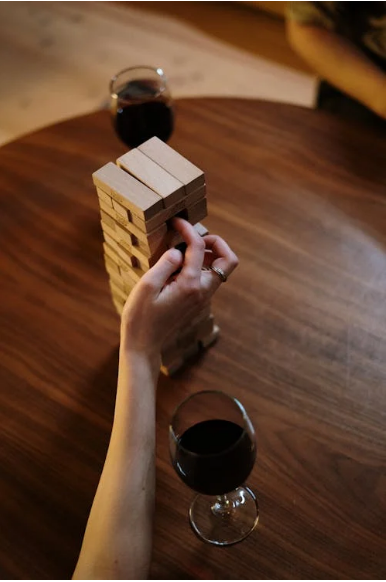Acrylic nails are a popular choice for those who want long, beautiful nails that are durable and stylish. However, when it comes time to remove them, it’s important to do so carefully to avoid damaging your natural nails. While you can always visit a salon for professional removal, you can also remove acrylic nails at home with the right tools and techniques. In this guide, we’ll walk you through the steps to safely and effectively how to remove acrylic nails at home of your own home.
Why It’s Important to Remove Acrylic Nails Properly
Before diving into the step-by-step process, it’s essential to understand why proper removal is crucial. Acrylic nails are applied using a strong adhesive, and improper removal can lead to damage such as:
- Nail Weakening: Removing acrylic nails improperly can strip away layers of your natural nail, leaving them thin, weak, and prone to breakage.
- Pain and Discomfort: Tearing off acrylics without the proper method can cause pain, bleeding, and long-term damage to the nail bed.
- Infections: If you accidentally tear your natural nail, it can create an entry point for bacteria, leading to infections.
By following the correct steps, you can avoid these issues and ensure that your nails remain healthy and strong.
Materials You’ll Need
Before starting the removal process, gather the following materials:
- Acetone: 100% pure acetone is the most effective for breaking down the acrylic. You can find this at most drugstores or beauty supply stores.
- Nail Clippers: For trimming the length of the acrylic nails.
- Nail File: A coarse nail file will help remove the top layer of the acrylic.
- Cuticle Pusher or Orangewood Stick: Useful for gently pushing off the acrylic after it has softened.
- Cotton Balls or Pads: To soak in acetone and apply to the nails.
- Aluminum Foil: For wrapping around the nails to hold the acetone-soaked cotton in place.
- Cuticle Oil: To moisturize your nails and cuticles after removal.
- Bowl of Warm Water (Optional): For soaking your nails to speed up the process.
- Buffing Block (Optional): To smooth the surface of your nails after removal.
Step 1: Trim the Acrylic Nails
Start by trimming your acrylic nails down to a shorter length using nail clippers. The shorter the nails, the less surface area how to remove acrylic nails at home you’ll have to work with, making the removal process quicker and more manageable. Be cautious not to trim too close to your natural nail to avoid accidentally cutting it.
Step 2: File the Top Layer of Acrylic
Using a coarse nail file, gently file down the top layer of the acrylic. This layer typically contains the shiny topcoat, which protects the acrylic and adds durability. By removing this layer, you’ll make it easier for the acetone to penetrate the acrylic and break it down.
File in gentle, back-and-forth motions, and be sure to cover the entire surface of the nail. You don’t need to file down to your natural nail—just enough to remove the glossy topcoat.
Step 3: Prepare the Acetone Soak
There are two common methods for soaking your nails in acetone: the cotton ball and foil method, and the bowl method.
Cotton Ball and Foil Method:
- Soak a cotton ball or pad in 100% acetone.
- Place the soaked cotton on top of your nail.
- Wrap a small piece of aluminum foil around your fingertip to hold the cotton in place.
- Repeat this process for all your nails.
- Allow your nails to soak for 20-30 minutes.
Bowl Method:
- Pour 100% acetone into a small bowl.
- Submerge your fingertips in the acetone, ensuring your nails are fully covered.
- Soak for 20-30 minutes.
The cotton ball and foil method is generally preferred because it minimizes skin exposure to acetone, which can be drying. However, the bowl method can be more convenient if you’re short on time or prefer to soak all your nails at once.
Step 4: Gently Remove the Acrylic
After soaking your nails in acetone for 20-30 minutes, the acrylic should start to soften and loosen from your natural nail. To test if the acrylic is ready to be removed, gently push at the edge of the acrylic with a cuticle pusher or orangewood stick. If it easily slides off, it’s ready to be removed.
If the acrylic doesn’t come off easily, resist the urge to force it. Instead, rewrap your nails in the acetone-soaked cotton and foil (or continue soaking in the bowl) for an additional 10-15 minutes, then try again.
Once the acrylic has softened, gently push it off from the cuticle towards the tip of the nail. If some acrylic remains, continue soaking and removing until all the material is gone.
Step 5: Buff and Shape Your Nails
After all the acrylic has been removed, your nails may look a bit rough and uneven. Use a buffing block to gently smooth the surface of your natural nails. This will remove any remaining adhesive residue and help restore a smooth texture.
Once your nails are buffed, you can shape them with a nail file to your desired length and shape. Be gentle, as your natural nails may be weaker after the acrylic removal process.
Step 6: Moisturize and Rehydrate
Acetone is highly effective at breaking down acrylic, but it can also be very drying to your natural nails and cuticles. After removing the acrylics, it’s important to rehydrate and moisturize your nails to restore their strength and flexibility.
Apply a generous amount of cuticle oil to your nails and massage it into the cuticles and nail beds. Cuticle oil helps nourish the nails, promoting healthy growth and preventing dryness and brittleness.
Follow up with a hand cream or lotion to moisturize your hands and keep your skin soft and hydrated. For extra hydration, you can apply a thick layer of hand cream before bed and wear cotton gloves overnight to lock in moisture.
Tips for Keeping Your Natural Nails Healthy After Acrylic Removal
Removing acrylic nails can leave your natural nails feeling weak and thin, but with the right care, you can restore their health and strength. Here are some tips to help your nails recover after removing acrylics:
1. Avoid Reapplying Acrylics Immediately: Give your natural nails a break before applying a new set of acrylics or any other home artificial enhancements. This allows your nails to recover and reduces the risk of long-term damage.
2. Keep Nails Short: While your nails are recovering, keep them trimmed to a shorter length. This reduces the risk of breakage and helps prevent splitting or peeling.
3. Use a Nail Strengthener: Apply a nail strengthener or hardener to your natural nails to help reinforce them and prevent breakage. Look for formulas that contain ingredients like keratin, biotin, and calcium to promote nail growth and strength.
4. Hydrate Regularly: Continue to apply cuticle oil daily to keep your nails and cuticles moisturized. This will help prevent dryness and brittleness, promoting healthier nail growth.
5. Be Gentle with Your Nails: Avoid using your nails as tools to open packages or scrape off labels. Treat them gently to prevent further damage as they recover.
6. Consider a Professional Manicure: If your nails need extra care, consider visiting a professional nail technician for a manicure. They can help shape your nails, buff away any remaining roughness, and apply treatments to strengthen and protect your nails.
Conclusion
Removing acrylic nails at home is a process how to remove acrylic nails at home that requires patience and care. By following the steps outlined in this guide, you can safely remove your acrylic nails without causing damage to your natural nails. Remember to take your time, avoid rushing the process, and prioritize the health of your nails throughout.
With proper care and maintenance, your natural nails will recover and grow stronger, allowing you to enjoy healthy, beautiful nails whether you choose to reapply acrylics or embrace your natural look.







